#Monteux
Explore tagged Tumblr posts
Text

Montreux, Switzerland
2 notes
·
View notes
Text
Mr. Monteux held the bâton and gave the first American performance of Schumann’s “Papillons” postponed from the preceding Friday because of Miss Lopokova’s illness. To a very badly orchestrated version of Schumann’s lovely miniatures were executed ridiculous caperings by a Pierrot and some girls in crinoline (with wings, for a puerile simulation of butterflies) quite as stupid and pointless as those of “Les Sylphides” (which contributed its discarded settings for the act) and that bore about as much relation to Schumann’s work as to Kuhnau’s “Bible Sonatas.”
H. F. P., “Art of an American the Life of New Ballet,” Musical America, October 28, 1916, Internet Archive.
#harsh#talking#monteux#schumann#robert schumann#papillons#op. 2#ballet#lopokova#pierrot#costume design#les sylphides#sylphides#set design#kuhnau#bible sonatas#h. f. p.#musical america
0 notes
Text
Composer Camille Saint Saens at the piano, Pierre Monteux conducting

#20th century#classical music#music history#photo#black and white photography#camille saint saëns#Pierre monteux#piano
40 notes
·
View notes
Text
Happy birthday Pierre Monteux
1 note
·
View note
Text

Nectavigne
(prunus persica 'nectavigne')
Not to be confused with blood peach (prunus persica 'sanguine de savoie')
If you had a vineyard in Lyon, France some 250 years ago, it's likely that your vines would've suffered from mildew caused by parasitic fungi. The solution? Indicator plants. The vintners started using peaches, known to be particularly sensitive to disease, which would react as soon as it was present and the vines were saved from mildew. The specific peach trees used were either the downy vineyard peach (prunus persica 'pêche de vigne') or blood peach (prunus persica 'sanguine de savoie') named for its dark red flesh, caused by the anthocyanins (an antioxidant) in the fruit.
Over time, by selectively picking fruits, a new range of fruits named nectavigne was born from the parentage of the vineyard peaches and nectarine. French breeder René Monteux-Caillet played a crucial part in this, dedicating a large portion of his life to breeding programs focused on apricot, peach and nectarine varieties adapted to the South East of France's growing conditions. The nectavigne lacks the downy skin of its parentage, but it still has the same great flavour, which is said to be sweet yet tangy, with a hint of raspberry aroma.
🍑 Reblog to share a fun fruit and to increase sample size! Check out even more interesting fruits here or in the list of all polled fruits. 🍑
45 notes
·
View notes
Text
Grand romantique et amoureux des fleurs veut de la tendresse, Monteux

Tendre et romantique gay de 37 ans sur Monteax dans le Vaucluse. Cherche un homme qui aime la nature, sans pour autant partir en camping sauvage. Adore les fleurs et les escapades.
Discuter avec Thierry
2 notes
·
View notes
Text
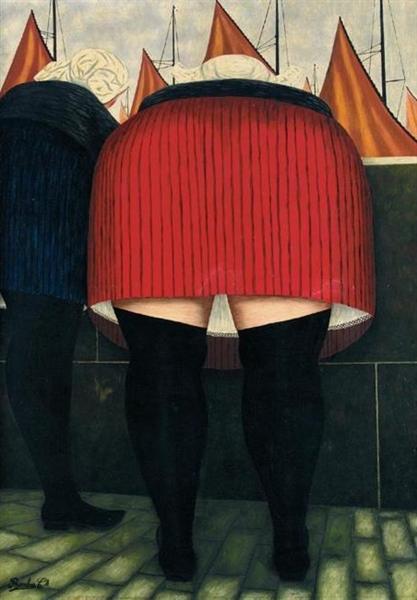
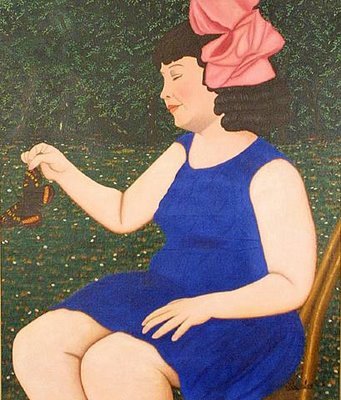
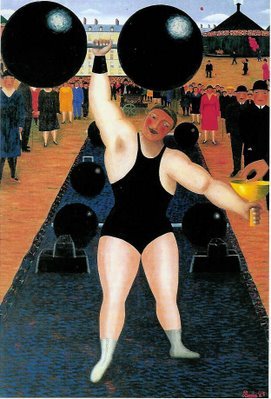
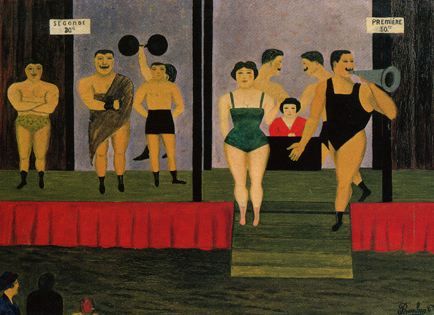
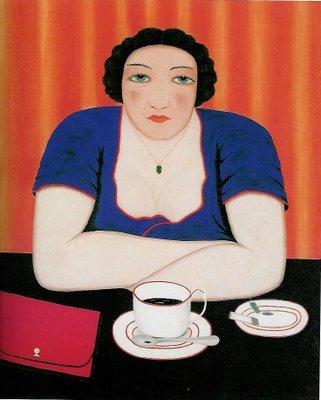
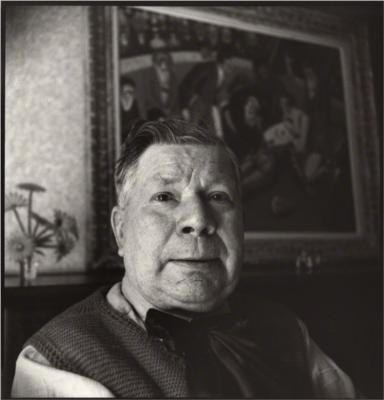
Camille Bombois (1883 – 1970) was a French naïve painter especially noted for paintings of circus scenes.
Bombois was born in Venarey-les-Laumes in the Côte-d'Or, in humble circumstances. His childhood was spent living on a barge and attending a local school until the age of twelve, when he became a farm worker. During his free time he drew and competed in wrestling competitions at local fairs. He became a champion local wrestler before joining a traveling circus as a strongman and wrestler.
In 1907, Bombois fulfilled his dream of moving to Paris, where he married and worked as a railway laborer, eventually finding a night job at a newspaper printing plant handling heavy newsprint rolls. Despite the exhausting nature of his job he painted from dawn to dusk, sleeping little. He showed his paintings in sidewalk exhibitions, but his earliest paintings, revealing the influence of the old masters in their subdued use of color, attracted few buyers.
1914 marked the beginning of four-and-a-half years of military service in World War I. Bombois spent much of it on the front line, earning three decorations for bravery. Upon his return home, encouraged that his wife had succeeded in selling a number of his paintings in his absence, he resumed his routine of night labor and daytime painting. In 1922, his sidewalk displays in Montmartre began attracting the attention of collectors. The art dealer Wilhelm Uhde "discovered" him in 1924, and exhibited Bombois' work in the Galeries des Quatre Chemins in 1927.[1] In 1937, his works were shown in the exhibition "Maîtres populaires de la réalité" in Paris. His first solo show was in 1944 at the Galerie P��tridès. Critics compared Bombois' work to that of Henri Rousseau, which it resembled in its naïve drawing, crisp delineation of form, and attention to detail, although Bombois was less of a fantasist than Rousseau.
The paintings of his maturity are bold in color, featuring strong contrasts of black, bright reds, blues and electric pinks. Drawing from his own experiences, he often painted circus performers and landscapes with fishermen. His paintings of women are emphatic in their carnality, and his landscapes are notable in their careful attention to space, and to the effects of reflected light on water. Bombois' works are on view in many public collections, notably the Musée Maillol in Paris.
In 2023, Bavarian town of Passau in Germany restituted a painting by Bombois that had been looted from Jewish collector Marcel Joseph Monteux, who was murdered in Auschwitz-Birkenau on August 15, 1944.
(wiki)
10 notes
·
View notes
Text

A treasure hunting vampire? Yes please!
To get ready for the Spring release of The Carnival of Fools, we're going back to the start and touring The Well of Souls by Cordelia Kelly!
The Well of Souls: A YA Paranormal Adventure Novel (Port of Lost Souls Book 1)
Publication Date: April 2024
Genre: YA Paranormal Fantasy
Vampires
Coming of Age
Treasure Hunting
Found Family
Misfit Teens
Some treasures are worth dying for. Some curses won’t let you die at all.
Duchesne Island may seem like a sleepy maritime town, but beneath its charm lies an ancient curse—any Otherworldly creature who sets foot on its shores will forfeit their immortal life.
Lola Monteux, a treasure-hunting vampire, never intended to test that legend. But when her crew betrays her and sentences her to death, she makes a desperate gamble: flee to the haunted island and uncover the fabled Well of Souls, a treasure said to grant unimaginable power—and her only chance at survival.
Disguised as a teenager, Lola infiltrates the island’s tight-knit community and unexpectedly finds herself drawn to Gael, a local boy with secrets of his own, and his misfit group of friends. For the first time in centuries, she feels the pull of her long-lost humanity, the intoxicating thrill of a life she thought she’d left behind. But the longer she lingers, the more the island’s magic ensnares her—and the more she forgets the deadly forces hunting her down.
As her past closes in and the island’s true horrors begin to surface, Lola faces an impossible choice: claim the treasure and ensure her survival or risk everything—including her heart—for a life she may never truly have.
Perfect for fans of Outer Banks and Twilight, The Well of Souls is an enthralling blend of curses, romance, and high-stakes adventure. Click buy now to check it out!
The Port of Lost Souls series continues with The Carnival of Fools, coming Spring 2025!
AVAILABLE ON AMAZON https://www.amazon.com/Well-Souls-Port-Lost-Book-ebook/dp/B0CQKLJSSR?
IG: @cordeliakellyauthor @rrbooktours
#rrbooktours #rrbtTheWellofSouls #thewellofsouls #yafantasy #yaparanormal #paranormalbooks #vampirebooks #vampires #portoflostsouls #youngadultbooks #booktours
0 notes
Text

Exposez votre talent avec l'Association Art et Vie !
Vous souhaitez faire découvrir votre travail à un public plus large ?
L’Association Art et Vie vous offre deux opportunités d’exposition à Carpentras :
🎨 La Galerie – Un espace d’exposition situé au 98, rue Porte de Monteux.
🖌️ L'Atelier – Un lieu de création et de partage au 47, rue du Refuge.
📄 Conditions disponibles sur demande.
Rejoignez-nous et donnez à votre art la visibilité qu’il mérite !
Infos : 04 90 60 69 54 / [email protected] / www.artetvie.org
1 note
·
View note
Text

Dr. Paul Douglas Freeman (January 2, 1936 – July 21, 2015) was a conductor, born in Richmond, Virginia.
He was a conductor, composer, and founder of the Chicago Sinfonietta. He earned his BA, MA, and Ph.D. from the Eastman School of Music. A Fulbright Scholarship enabled him to study for two years at the Hochschule für Musik in Berlin with Ewald Lindemann. He studied conducting with Pierre Monteux at the American Symphony Orchestra.
He began his conducting career as the music director of the Opera Theatre of Rochester for six years. He then held posts as associate conductor of the Dallas Symphony Orchestra and Detroit Symphony Orchestra. These were followed by a stint as principal guest conductor of the Helsinki Philharmonic. He served as music director of the Victoria Symphony in Canada. He founded the Chicago Sinfonietta of which he remained the Musical Director until his retirement. Concurrently with his time with the Chicago Sinfonietta, he held the post of music director and chief conductor of the Czech National Symphony Orchestra in Prague. Following his retirement from the Chicago Sinfonietta, he was named Emeritus Music Director of the orchestra.
He can be considered one of the most successful recording conductors from the US. He has a nine-LP series that follows the history of African American symphonic composers from 1750 to the time of recording. This series garnered a lot of attention on the Columbia Records label during the 1970s and has since been re-released as a Sony Classical boxed set of ten CDs, published in 2019. He collaborated with pianist Derek Han to record all of the piano concertos of Mozart, Haydn, and Beethoven. In his work with numerous orchestras, he has been a part of over a dozen televised productions in North America and Europe. He has been nominated for two Emmy Awards.
He married Cornelia Freeman and they had one son. #africanhistory365 #africanexcellence
1 note
·
View note
Text
J.S. Bach* - Yehudi Menuhin, Georges Enesco*, Pierre Monteux - Concertos Pour Violon N° 1 En La Mineur, BWV 1041 / N°2 En Mi Majeur, BWV. 1042 / Double Concerto En Re Mineur, BWV. 1043 (LP, Comp, Mono)
Vinyl(VG++) Picture Cover(VG++) / / more than VG+ conditions, in good shape / コンディション 盤 : Very Good Plus (VG+) コンディション ジャケット : Very Good Plus (VG+) コンディションの表記について [ M > M- > VG+ > VG > G+ > G > F > P ] レーベル : La Voix De Son Maître – 2C 051-43070 フォーマット : Vinyl, LP, Mono 生産国 : France 発売年 : 1981 ジャンル : Classical スタイル : Baroque 収録曲 : . Concerto N° 1 En La Mineur, BWV 1041 Pour Violon Et…
0 notes
Text
Last Spring
1954
22 min
Direção
François Reichenbach
Dois jovens têm um relacionamento que dura o tempo de uma primavera idílica e depois se separam. O amante que ficou para trás procura com alegria e depois desespero por uma carta do outro homem, mas ela não chega.
François Reichenbach
François Arnold Reichenbach (3 de julho de 1921 – 2 de fevereiro de 1993) foi um diretor de cinema , produtor cinematográfico e roteirista francês . Dirigiu 40 filmes entre 1954 e 1993.
Vida pregressa
François Reichenbach nasceu em 1921 em Neuilly-sur-Seine em uma família extremamente rica de industriais e empresários de ascendência austro-judaica. Seu pai, Bernard Reichenbach, era um empresário de sucesso e sua mãe, Germaine Angèle Sarah Monteux, tinha paixão pela música, que ela transmitiu ao jovem François.
Seu avô materno, Gaston Monteux, era um rico industrial: foi um dos primeiros a comprar pinturas de Chagall, Braque, Picasso, Soutine, Utrillo e Modigliani. Em suas memórias, François Reichenbach conta: "Aos cinco anos, eu tinha pavor de todos os rostos nas pinturas. E me tornei um falsificador. Adicionei bigodes e pelos aos nus de Modigliani. Essa farsa ganha outra dimensão quando você sabe que fiz um filme com Orson Welles sobre o falsificador Elmyr de Hory em 1973."
Ele é sobrinho do colecionador de manuscritos e livros Jacques Guérin e primo do produtor de cinema Pierre Braunberger, que o incentivou a fazer filmes.
Emigração
Durante a Segunda Guerra Mundial, François Reichenbach foi para Genebra. Embora tenha nascido na França, ele também tem nacionalidade suíça, pois seu avô paterno, Arnold Reichenbach, é um rico industrial suíço que trabalhava na indústria de bordados em St. Gallen. Ele estudou música no Conservatório de Música de Genebra, onde conheceu o diretor de cinema Gérard Oury.
Após a Libertação, ele escreveu canções, principalmente para Édith Piaf e Marie Dubas.
Então, lembrando-se da enorme coleção de pinturas de sua infância, partiu para os Estados Unidos com um cartão de emigrante para vender pinturas. Começou em Nova York como consultor de museus americanos para a compra de obras de arte na Europa e, em seguida, vendeu pinturas de grandes mestres. Passou vários anos nos Estados Unidos.
Morte
Em seu leito de morte, François Reichenbach confidenciou a Daniele Thompson seu desejo de ser enterrado em Limoges, onde passara as férias da juventude. Diante dos protestos do roteirista, que alegava que seria inconveniente visitá-lo, o cineasta respondeu: "Aqueles que me amam pegarão o trem".
Esta citação inspirou Danièle Thompson a escrever o título do filme Ceux qui m'aiment prendront le train (Aqueles que me amam pegarão o trem), de Patrice Chéreau, estrelado por Jean-Louis Trintignant, Charles Berling e Vincent Perez. François Reichenbach morreu em 2 de fevereiro de 1993, em Neuilly-sur-Seine. Ele está enterrado no cemitério Louyat, em Limoges.
Trabalho como diretor
Este pioneiro da Nouvelle Vague pela importância da sua obra cinematográfica faz deste homem, com um olhar livre e respeitoso para com os outros, uma testemunha privilegiada do seu tempo. Ele tem sempre uma câmara carregada no banco de trás do seu carro para filmar imediatamente, por precaução, porque gosta de "filmar tudo o que se move". A revista Cahiers du cinéma escreveu: "François Reichenbach nasceu com uma câmara no olho".
Em 1955, ele comprou sua primeira câmera Bell & Howell de 16 mm e realizou seu quarto curta-metragem, Impressions de New York, que ganhou o Prêmio Especial do Júri no Festival de Cinema de Tours e uma menção no Festival Internacional de Cinema de Edimburgo: sua carreira como cineasta estava lançada. François Reichenbach filma tudo o que lhe vem à cabeça, com os dois olhos abertos. Ele diz que "o cinema é feito por pessoas de um olho só: um olho no visor, o outro fechado para melhor se concentrar na imagem. Ele mantém o outro aberto (o olho humano) para não perder o contato e não abandonar o sujeito filmado à máquina que é a câmera.
Em 1957, dirigiu seu primeiro curta-metragem, The Marines, sobre uma unidade de elite americana, que impôs um novo estilo pela impressão de verdade, pelo nervo e pela originalidade do olhar.
Este bulímico de imagens filma incansavelmente o que observa de acordo com sua inspiração e suas andanças. Acima de tudo, ele gosta de se apresentar como músico. Realizou mais de cem documentários, alternando entre França, Estados Unidos e México, com uma filmografia muito pessoal e reportagens artísticas próximas ao jornalismo. Fez uma grande variedade de retratos, incluindo o cineasta Orson Welles, os músicos Yehudi Menuhin, Arthur Rubinstein, Mstislav Rostropovitch, Manitas de Plata, artistas populares como Johnny Hallyday, Sylvie Vartan, Barbara, Mireille Mathieu, Diane Dufresne, Vince Taylor, os jogadores de futebol Pelé e Pascal Olmeta, o matador El Cordobés, o escultor Arman, o violonista Manitas de Plata, a pintora Marguerite Dunoyer de Segonzac, o comerciante de charutos Zino Davidoff, o maestro Herbert von Karajan e as atrizes Jeanne Moreau e Brigitte Bardot.
François Reichenbach também é o autor do escopitone (o ancestral do videoclipe) de Bonnie e Clyde (1967) cantado por Serge Gainsbourg e Brigitte Bardot.
Em 1960, seu primeiro longa-metragem, Unusual America, causou sensação com seu novo estilo, sua impressão de verdade e a originalidade de sua visão. Filmou o cidadão americano do nascimento à morte em todas as circunstâncias cômicas, burlescas e inusitadas de sua vida.
Em 1964, recebeu a Palma de Ouro no Festival de Cinema de Cannes por seu curta-metragem "La Douceur du Village". O curta retrata com simplicidade e poesia a vida de um estudante rural na aldeia de Loué. François Reichenbach recebeu o Oscar de melhor documentário em 1970 por "L'Amour de la vie - Artur Rubinstein".
No final da vida, voltou a Genebra, cidade dos seus estudos musicais, para realizar quatro filmes: A Arte de Fumar Charutos, de Zino Davidoff (1983), Genebra (1988), Nestlé, de Reichenbach (1990) e Rostos Suíços, para o 700º aniversário da Confederação Suíça (1991).
Homoerotismo
François Reichenbach filma os seus companheiros de viagem e o seu coração, o seu Ganimedes, com grande simplicidade. Gay e sem pedir desculpas por isso. Rebeldes sem causa. Feliz por estar nu. Piscadelas e pudores, sem complexos, jogos de caminhos e olhares compõem um erotismo que faria corar nossos libertos Jean Cocteau e Kenneth Anger.
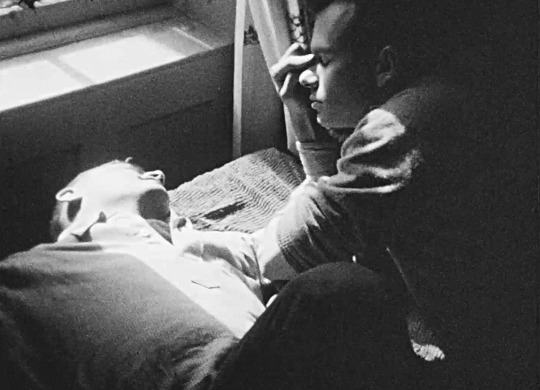
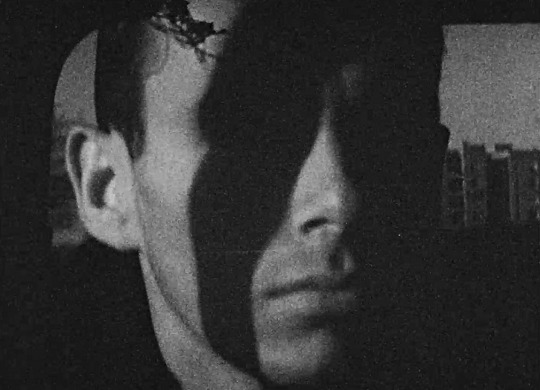
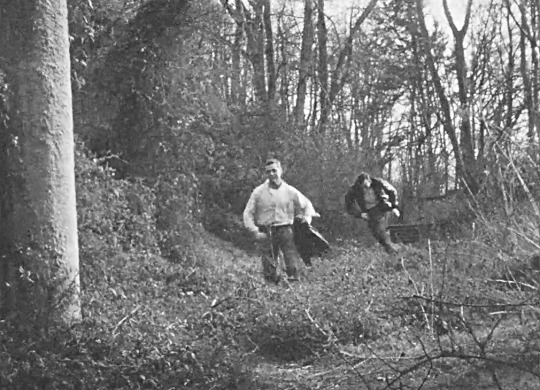
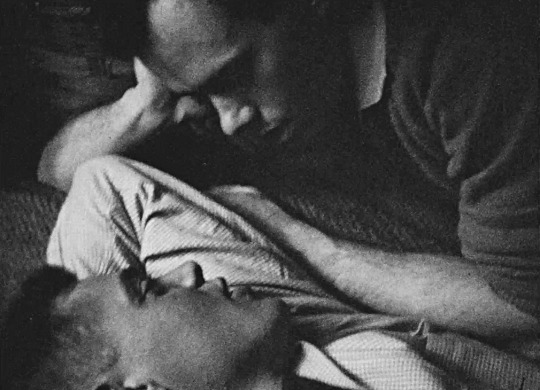
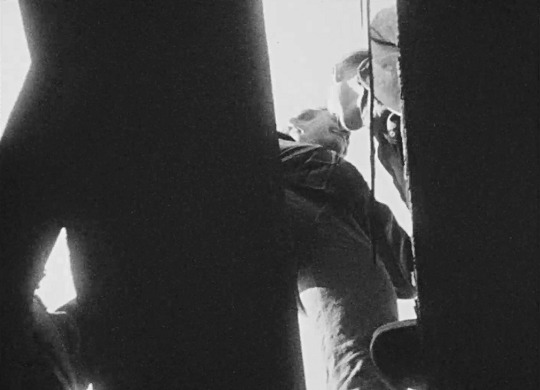

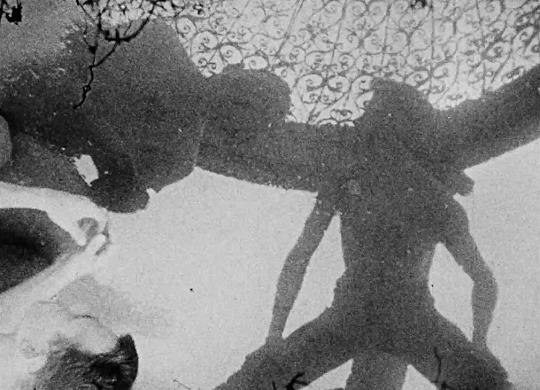
Last Spring (1954) // dir. François Reichenbach
124 notes
·
View notes
Text
Igor Stravinsky (1882-1971)
Igor Stravinsky (1882-1971)Three Movements from Petrushka: The Shrovetide FairThree Movements from Petrushka: The Shrovetide Fair ·Arthur Rubinstein, piano · Igor StravinskyNew Highlights from "Rubinstein at Carnegie Hall" - Recorded During the Historic 10 Recitals of 1961Please, subscribe to our Library. Thank you!Best Sheet Music download from our Library.Igor Stravinsky's PetrushkaIgor Stravinsky (short bio)
Igor Stravinsky (1882-1971)
Three Movements from Petrushka: The Shrovetide Fair
https://www.youtube.com/watch?v=cSSWuIfb0LU Three Movements from Petrushka: The Shrovetide Fair · Arthur Rubinstein, piano · Igor Stravinsky New Highlights from "Rubinstein at Carnegie Hall" - Recorded During the Historic 10 Recitals of 1961

Igor Stravinsky's Petrushka
Petrushka (French: Pétrouchka; Russian: Петрушка) is a ballet and orchestral concert work by Russian composer Igor Stravinsky. It was written for the 1911 Paris season of Sergei Diaghilev's Ballets Russes company; the original choreography was by Michel Fokine and stage designs and costumes by Alexandre Benois, who assisted Stravinsky with the libretto. The ballet premiered at the Théâtre du Châtelet on 13 June 1911 with Vaslav Nijinsky as Petrushka, Tamara Karsavina as the lead ballerina, Alexander Orlov as the Moor, and Enrico Cecchetti the charlatan. Petrushka tells the story of the loves and jealousies of three puppets. The three are brought to life by the Charlatan during the 1830 Shrovetide Fair (Maslenitsa) in Saint Petersburg, Russia. Petrushka loves the Ballerina, but she rejects him. She prefers the Moor. Petrushka is angry and hurt, and challenges the Moor. The Moor kills him with his scimitar. Petrushka's ghost rises above the puppet theatre as night falls. He shakes his fist at the Charlatan, then collapses in a second death. The gestation of Petrushka was not a straightforward matter. While completing The Firebird during the spring of 1910, Stravinsky had a "vision" of a solemn pagan rite: sage elders, seated in a circle, watching a young girl dance herself to death. They were sacrificing her to propitiate the god of Spring. Such was the theme of The Rite of Spring. Immediately following the stunning success of The Firebird in June 1910, Diaghilev approached Stravinsky about a new ballet; the composer proposed the Rite theme. Diaghilev accepted in principle and suggested that the premiere might take place during the Paris season of the Ballets Russes during the spring of 1912. At the end of September 1910, Diaghilev went to visit Stravinsky in Clarens, Switzerland, where he was living at the time. Expecting to discuss the new ballet, Diaghilev was astonished to find Stravinsky hard at work on a totally different project. Stravinsky, it seems, had had another vision: "I saw a man in evening dress, with long hair, the musician or poet of the romantic tradition. He placed several heteroclite objects on the keyboard and rolled them up and down. At this the orchestra exploded with the most vehement protestations – hammer blows, in fact …" Later, Stravinsky wrote: "n composing the music, I had in my mind a distinct picture of a puppet, suddenly endowed with life, exasperating the patience of the orchestra with diabolical cascades of arpeggios. The orchestra in turn retaliates with menacing trumpet blasts." Although Stravinsky had conceived the music as a pure concert work—a Konzertstück, Diaghilev immediately realized its theatrical potential. The notion of a puppet put Diaghilev in mind of Petrushka, the Russian version of Punch and Judy puppetry that had formed a traditional part of the pre-Lenten Carnival festivities in 1830s St. Petersburg. Stravinsky composed the music during the winter of 1910–11 for Diaghilev's Ballets Russes. It was premièred in Paris at the Théâtre du Châtelet on 13 June 1911 under conductor Pierre Monteux, with choreography by Michel Fokine and sets by Alexandre Benois. The title role was danced by Vaslav Nijinsky. The work is characterized by the so-called Petrushka chord (consisting of C major and F♯ major triads played together), a bitonality device heralding the appearance of the main character. The original 1911 version of Petrushka is scored for the following orchestra. Stravinsky's 1946 scoring is for a smaller orchestra: Compared to the 1911 version, the 1946 version (given in 1947) requires 1 less flute; 2 fewer oboes, but a dedicated cor anglais player instead of one doubled by the fourth oboe; 1 less clarinet; 2 fewer bassoons, but a dedicated contrabassoon; neither of the 2 cornets, but an additional trumpet; 1 less snare drum and no tenor drum, thus removing the offstage instruments; no glockenspiel; and 1 less harp. While the original idea was Stravinsky's, Alexandre Benois provided the ethnographic details of the Shrovetide Fair and the traditions of the Russian puppet theater. And although Petrushka is frequently cited as an example of the complete integration of libretto, music, choreography, and scenic design, Stravinsky had composed significant portions of the music (chiefly the Second Tableau) before Benois became involved with the project. Petrushka begins with a festive orchestral introduction based, in part, on historical Russian street-hawkers' cries. The curtain rises to reveal St. Petersburg's Admiralty Square during the 1830s. The stage set (also by Benois) depicts several hucksters' booths, a ferris-wheel, a carousel, and (upstage center) a puppet theater. A crowd has gathered for the Shrovetide Fair (known as Maslenitsa), the carnival (analogous to Mardi Gras) preceding Lent. In Fokine's original choreography, a group of Drunken Revelers emerges from the crowd, dancing to Stravinsky's adaptation of the folk-tune "Song of the Volochobniki" ("Dalalin' Dalalin'" from Rimsky-Korsakov Op. 24 No. 47). Suddenly, the festive music is interrupted by strident brass announcing the appearance of the Master of Ceremonies on the balcony of his booth. The equivalent of a carnival "barker", he boasts of the attractions to be seen within. The squeaks of a street-organ are heard (clarinets and flutes) as an Organ-Grinder and Dancing Girl emerge from the crowd, which at first pays little attention as the barker continues to shout. The Dancer moves downstage and begins to dance to another Russian folk-song, "Toward Evening, in Rainy Autumn", while playing the triangle. At the other end of the stage, a second Dancing Girl appears, accompanied by a music box (suggested in the orchestra by the celesta). The two Dancing Girls compete for the crowd's attention to the strains of a ribald French music-hall song about a woman with a wooden leg: "Une Jambe de bois". Both tunes are repeated. The Drunken Revelers return (again to the "Song of the Volochobniki") interrupted several times by the Barker's boasts. The street-hawkers' cries of the very opening are heard once more. Suddenly, two drummers summon the crowd to the puppet theater with deafening drumrolls. The Magician (sometimes called the "Charlatan") appears to mystical groans from the bassoon and contrabassoon. When he has everyone's attention, he produces a flute and begins to play a long, improvisatory melody. The curtain of the puppet theater rises to reveal three puppets hanging on the wall: the Moor, the Ballerina, and Petrushka. When the Magician touches them with his flute (to chirps in the orchestra), they seem to awaken. The astonished crowd watches as, with a wave of the Magician's hand, the three puppets begin a vigorous Russian Dance (based on two more Russian folk-tunes: "A Linden Tree Is in the Field" and "Song for St. John's Eve"). In Fokine's masterly choreography, they first begin to move their feet (while still hanging on the wall), then burst forth from the puppet theater into the midst of the crowd. The Moor (resplendent in turban and exaggerated pantaloons) is swashbuckling. The Ballerina dances perpetually en pointe. Petrushka, on the other hand, is wooden and awkward. It becomes apparent Petrushka loves the Ballerina; but she has eyes only for the Moor. The Magician calls the dance to a halt; the curtain falls rapidly. Although Petrushka's room is inside the puppet theater, the Benois design is fantastical, portraying the night sky with stars and a half-moon; abstract icebergs (or snow-capped mountains), and a prominent portrait of the Magician. Drumrolls announce the beginning of the Second Tableau. Without an Introduction, the music begins menacingly. "A foot kicks him onstage; Petrushka falls…" As Petrushka gradually pulls himself together, we hear a strange arpeggio in the clarinets: this is the famous "Petrushka chord" (consisting of juxtaposed triads of C major and F♯ major). Petrushka gets to his feet (although shakily) to the accompaniment of waves of arpeggios from the piano (revealing the music's origins in Stravinsky's Konzertstück). The "Petrushka Chord" returns, now violently scored for trumpets, marked in the score "Petrushka's Curses", directed at the portrait of the Magician. The music turns lyrical as Petrushka falls to his knees and mimes (in turn) his self-pity, love for the Ballerina, and hatred of the Magician. The Ballerina (still en pointe) sneaks into Petrushka's room, at first unnoticed. As soon as Petrushka sees her, he begins a manic, athletic display of leaps and frantic gestures (although he was barely able to stand before she arrived). Frightened by his exuberance, the Ballerina flees. Petrushka falls to the floor to the mocking of the clarinets. Another passage of arpeggios for piano grows into a second round of curses directed at the Magician, again represented musically by the "Petrushka Chord", this time scored for full orchestra. For just a moment, Petrushka peers out of his room at the crowd assembled in Admiralty Square (Stravinsky provides a brief reference to the "crowd music" of the First Tableau). Then, Petrushka collapses as we hear a taunting reprise of the clarinets playing the "Petrushka Chord", followed by an odd trumpet call signalling "blackout, curtain." As before, drumrolls link the Third Tableau to its predecessor (in the 1911 score, Stravinsky directs that this drumroll should be omitted in concert performance). In sharp contrast to the darkness of Petrushka's Room, the brilliant colors of the Benois design for the Moor's Room evoke a romanticized desert: palm trees, exotic flowers, sand. In Fokine's choreography, the Moor reclines on a divan playing with a coconut. He then jumps to his feet and attempts to cut it with his scimitar. When he fails he believes that the coconut must be a god and proceeds to pray to it. The Charlatan places the Ballerina in the Moor's room. The Ballerina is attracted to the Moor's handsome appearance. She plays a saucy tune on a toy trumpet (represented by a cornet in the original 1911 orchestration) and then dances with the Moor in a waltz (the themes taken from Joseph Lanner's Op. 165 No. 1 and Op. 200 No. 1). Petrushka finally breaks free from his cell; he interrupts the seduction of the Ballerina. Petrushka attacks the Moor but soon realizes he is too small and weak. The Moor beats Petrushka. The ballerina faints. The clown-puppet flees for his life, with the Moor chasing him, and escapes from the room. The fourth and final scene returns to the carnival. Some time has passed; it is now early evening. The orchestra introduces a chain of colourful dances as a series of apparently unrelated characters come and go about the stage as snow begins to fall. The first and most prominent is the Wet-Nurses' Dance, performed to the tune of the folk song "Down the Petersky Road". Then comes a peasant with his dancing bear, followed in turn by a group of a gypsies, coachmen and grooms and masqueraders. As the merrymaking reaches its peak, a cry is heard from the puppet-theater. Petrushka suddenly runs across the scene, followed by the Moor in hot pursuit brandishing his sword, and the terrified Ballerina chasing after the Moor, fearful of what he might do. The crowd is horrified when the Moor catches up with Petrushka and slays him with a single stroke of his blade. The police question the Charlatan. The Charlatan seeks to restore calm by holding the "corpse" above his head and shaking it to remind everyone that Petrushka is but a puppet. As night falls and the crowd disperses, the Charlatan leaves, carrying Petrushka's limp body. All of a sudden, Petrushka's ghost appears on the roof of the little theatre, his cry now in the form of angry defiance. Petrushka's spirit thumbs its nose at his tormentor from beyond the wood and straw of his carcass. Now completely alone, the Charlatan is terrified to see the leering ghost of Petrushka. He runs away while allowing himself a single frightened glance over his shoulder. The scene is hushed, leaving the audience to wonder who is "real" and who is not. The work is divided into four tableaux (scenes). The score further indicates the following episodes: During rehearsals for the 1911 premiere, Stravinsky and other pianists including Russian composer Nikolai Tcherepnin used a piano four-hand version of the score. This has never been published, although Paul Jacobs and Ursula Oppens, among other pianists, have played it in concert. In 1921, Stravinsky created a virtuosic and celebrated piano arrangement for Arthur Rubinstein, Trois mouvements de Petrouchka, which the composer admitted he could not play himself, for want of adequate left-hand technique. Herbert Stothart, who composed the score for The Wizard of Oz, was visited by Stravinsky at MGM in 1936. Stravinsky gifted Stothart a personal, signed copy of Petrushka. As the main characters in the film run through the Deadly Poppy Field, the opening to the fourth tableau can be heard briefly. In 1946, he thinned the ballet's scoring, in part because the original was not covered everywhere by copyright. The rapid continuous timpani and snare-drum notes that link each scene, optional in 1911, are compulsory in this version, which was published in 1947. The Ballerina's tune is assigned to a trumpet in 1946 in place of a cornet, and the 1946 version provides an optional fff (fortississimo) near the piano conclusion. Stravinsky also removed some difficult metric modulations in the First Tableau. Separately Stravinsky created a suite for concert performance, an almost complete version of the ballet but cutting the last three sections. In 1956, an animated version of the ballet appeared as part of NBC's Sol Hurok Music Hour. It was personally conducted by Stravinsky himself and was the first such collaboration. Directed by animator John David Wilson with Fine Arts Films, it has been noted as the first animated special ever to air on television. In 1988, Maddalena Fagandini directed a version of Petrushka along with The Sleeping Beauty (Tchaikovsky), The Nutcracker (and the Mouse King) (Tchaikovsky) and Coppélia (Delibes) in the BBC puppet film Musical Tales which was released in VHS. Basil Twist debuted his puppetry version of Petrushka at Lincoln Center in 2001; it was performed as well at New York City Center's 2009 Fall for Dance Festival. A full transcription of the 1911 version for symphonic wind ensemble in the original key was made by Don Patterson.
Igor Stravinsky (short bio)
Igor Fyodorovich Stravinsky (17 June 1882 – 6 April 1971) was a Russian composer and conductor with French citizenship (from 1934) and American citizenship (from 1945). He is widely considered one of the most important and influential composers of the 20th century and a pivotal figure in modernist music. Born to a famous bass in Saint Petersburg, Russia, Stravinsky grew up taking piano and music theory lessons. While studying law at the University of Saint Petersburg, he met Nikolai Rimsky-Korsakov and studied under him until his death in 1908. Igor Stravinsky met the impresario Sergei Diaghilev soon after, who commissioned the composer to write three ballets for the Ballets Russes's Paris seasons: The Firebird (1910), Petrushka (1911), and The Rite of Spring (1913), the last of which caused a near-riot at the premiere due to its avant-garde nature and later changed the way composers understood rhythmic structure. Stravinsky's compositional career is often divided into three periods: his Russian period (1913–1920), his neoclassical period (1920–1951), and his serial period (1954–1968). During his Russian period, Stravinsky was heavily influenced by Russian styles and folklore. Works such as Renard (1916) and Les noces (1923) drew upon Russian folk poetry, while compositions like L'Histoire du soldat (1918) integrated these folk elements with popular musical forms, including the tango, waltz, ragtime, and chorale. His neoclassical period exhibited themes and techniques from the classical period, like the use of the sonata form in his Octet (1923) and use of Greek mythological themes in works like Apollon musagète (1927), Oedipus rex (1927), and Persephone (1935). In his serial period, Stravinsky turned towards compositional techniques from the Second Viennese School like Arnold Schoenberg's twelve-tone technique. In Memoriam Dylan Thomas (1954) was the first of his compositions to be fully based on the technique, and Canticum Sacrum (1956) was his first to be based on a tone row. Stravinsky's last major work was the Requiem Canticles (1966), which was performed at his funeral. While many supporters were confused by Stravinsky's constant stylistic changes, later writers recognized his versatile language as important in the development of modernist music. Stravinsky's revolutionary ideas influenced composers as diverse as Aaron Copland, Philip Glass, Béla Bartók, and Pierre Boulez, who were all challenged to innovate music in areas beyond tonality, especially rhythm and form. In 1998, Time magazine listed Stravinsky as one of the 100 most influential people of the century. Stravinsky died of pulmonary edema on 6 April 1971 in New York City, having left six memoirs written with his friend and assistant Robert Craft, as well as an earlier autobiography and a series of lectures. Read the full article
#SMLPDF#noten#partitura#sheetmusicdownload#sheetmusicscoredownloadpartiturapartitionspartitinoten楽譜망할음악ноты
1 note
·
View note
Text
youtube
-- MONTEUX & STRAVINSKY - Le Sacre du Printemps - 'Danse Sacrale'.wmv --
This is, to me, the minimum tempo necessary to convince me that the prima ballerina, that "knock-kneed and long-braided Lolita", is dancing herself to death.
At this tempo, the ballet's plot could come close to reality. A small human sacrifice to the spirit of art.
0 notes
Text
Robert Casadesus - Pierre Monteux - Mozart - 1958 - Past Daily Sunday Gramophone
Become a member: Become a Patron! https://pastdaily.com/wp-content/uploads/2024/05/Mozart_KV_491_Casadesus_ONRDF_Monteux_21_09_1958_Montreux.mp3 The legendary Robert Casadesus with the Orchestre National de la RadioDiffusion Francaise led by Pierre Monteux in a performance of Mozart’s Piano Concerto Number 24 (K.491) – recorded broadcast from the Salle du Pavillon in Montreux Switzerland on…

View On WordPress
0 notes
Text
https://www.mesopinions.com/petition/animaux/mairie-monteux-stop-aux-captures-pigeons/229363
0 notes